View basket (0 items $0.00)
Error message
- Notice: unserialize(): Error at offset 5 of 154 bytes in variable_initialize() (line 1202 of /home/dh_6hcdc2/yogau.online/docroot/includes/bootstrap.inc).
- The file could not be created.
- The file could not be created.
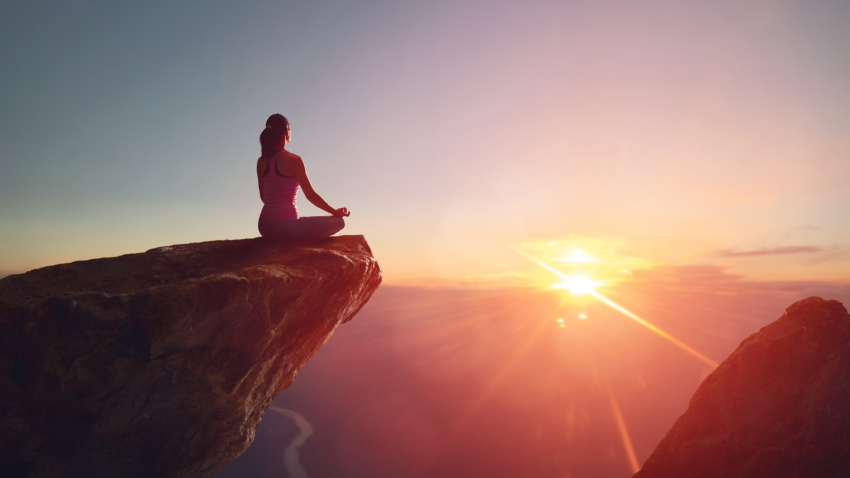
Yoga Principles to Guide Your New Year
Welcome to 2021! Congratulations, we have made it through what felt like the longest year in history.
No matter what your individual 2020 experience may have been, it’s probably fair to say we all were a little scared at times, fearful of the unknown, and frustrated by the out-of-control feelings that came from all the societal changes of living in a pandemic. There may even be some apprehension about what this new year will bring to us and to our families.
As yogis, we strive to stay present in our thoughts and make the best of a situation. For many of us, those yogic principles were put to the test this past year. But our yoga practice can stand the test of time, even through quarantines, shutdowns, illnesses, and recovery.
However, the pandemic may continue to affect us this year, here are a few tips to help us have a Happy Yoga-Inspired New Year for 2021.
How to Find Your Drishti
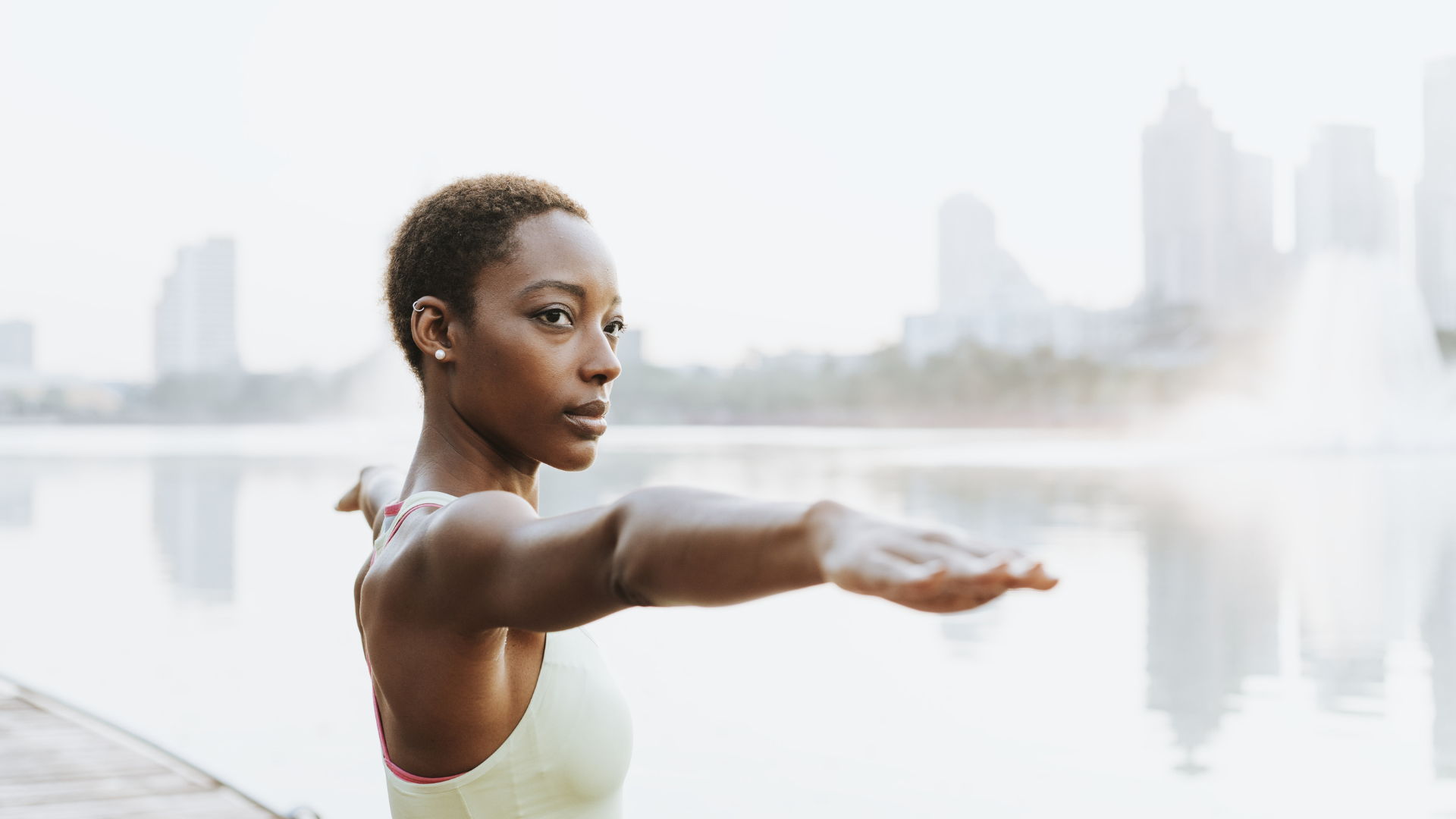
When yoga teachers talk about Drishti, they will often use the phrase “where your eyes look, your attention follows.” In simpler terms, what we focus our attention on is what we will achieve. Spending a little time at the beginning of the year to decide what you want to focus on the rest of the year can help you achieve your goals.
-
Start day one of 2021 practicing your Drishti. No matter the weather, I like to get outside and go for a walk on New Year’s Day. For me, that signifies my focus on my health, my wellness, and a token gesture toward a year ahead full of adventure and travel. Find something you can do today that you want to continue all year long.
-
Create a vision board. Vision boards are as simple or elaborate as you decide to make them. First, decide on a few goals you want to stay focused on this year. Then have fun cutting out words and pictures from old magazines, or design your own artwork, that represent those goals. Turn your cuttings into a collage that you keep visible to remind you daily of what matters most to you.
-
Have fun with old traditions, or create new ones. My grandmother insisted we eat pork and cabbage on New Year’s Day. Now that I live in the South, black-eyed peas are the must-have food at any New Year’s Day dinner. My kids don’t like cabbage or peas, but I still cook cabbage on January 1 so we can have at least one bite as a way to remember our relatives and maybe get some of that good luck promised by that good food.
Clear Out The Old Year And Prepare For The New Year
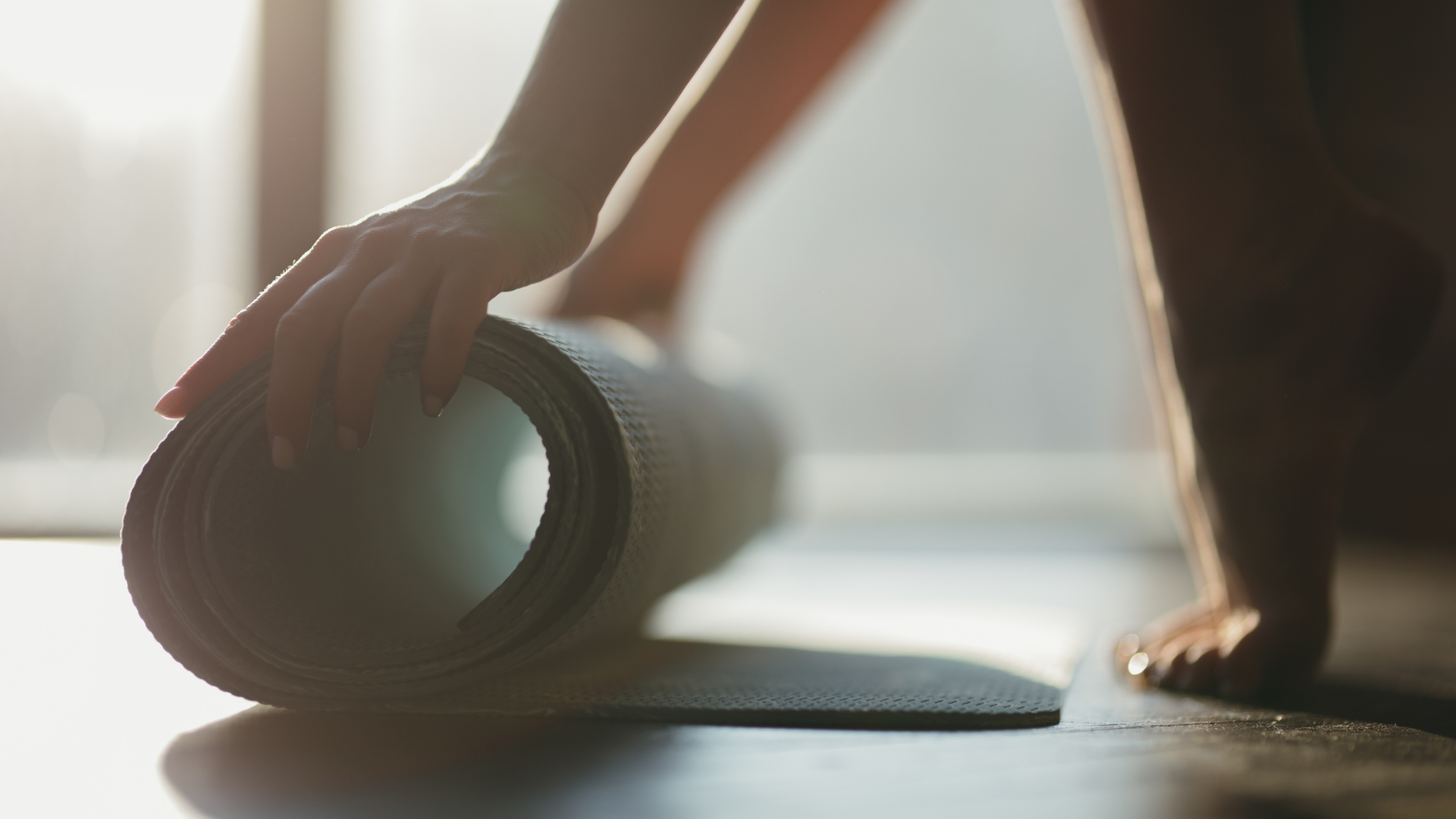
We know that we can’t move forward until we leave the past behind. For you that might mean a literal getting rid of old items or a figurative releasing of old energy.
-
Burn sage throughout your living space. Burning sage, also known as smudging, is an ancient spiritual ritual of the Native Americans. It can be used to dispel negative energy and to purify a space. If you can’t actually burn sage where you live due to the smoke it will cause, try placing some sage essential oil in the corners of each room.
-
Clean out your closets. Don’t forget the stuff you have shoved way into the back to use “someday.” If someday hasn’t happened yet, it’s safe to say you don’t need all that stuff anymore.
-
Throw away your 2020 calendar and pull out a fresh new 2021 planner. Start filling all those blank spaces with dreams, goals, and endless possibilities.
How to Practice Peace And Presence in Your Yoga Practice
No one knows yet what the year 2021 has in store for us. We can rest assured there will most likely be some good times, and some bad times. However, our yoga practice allows us to find a little bit of peace on our mat no matter what is going on in the outer world. Here is a yoga sequence you can practice any time you feel the weight of the world disrupting your inner peace.
Alternate Nostril Breathing (Nadi Shodhana): Alternate Nostril Breathing can promote a more efficient breathing pattern, reduce anxiety, and lower stress.
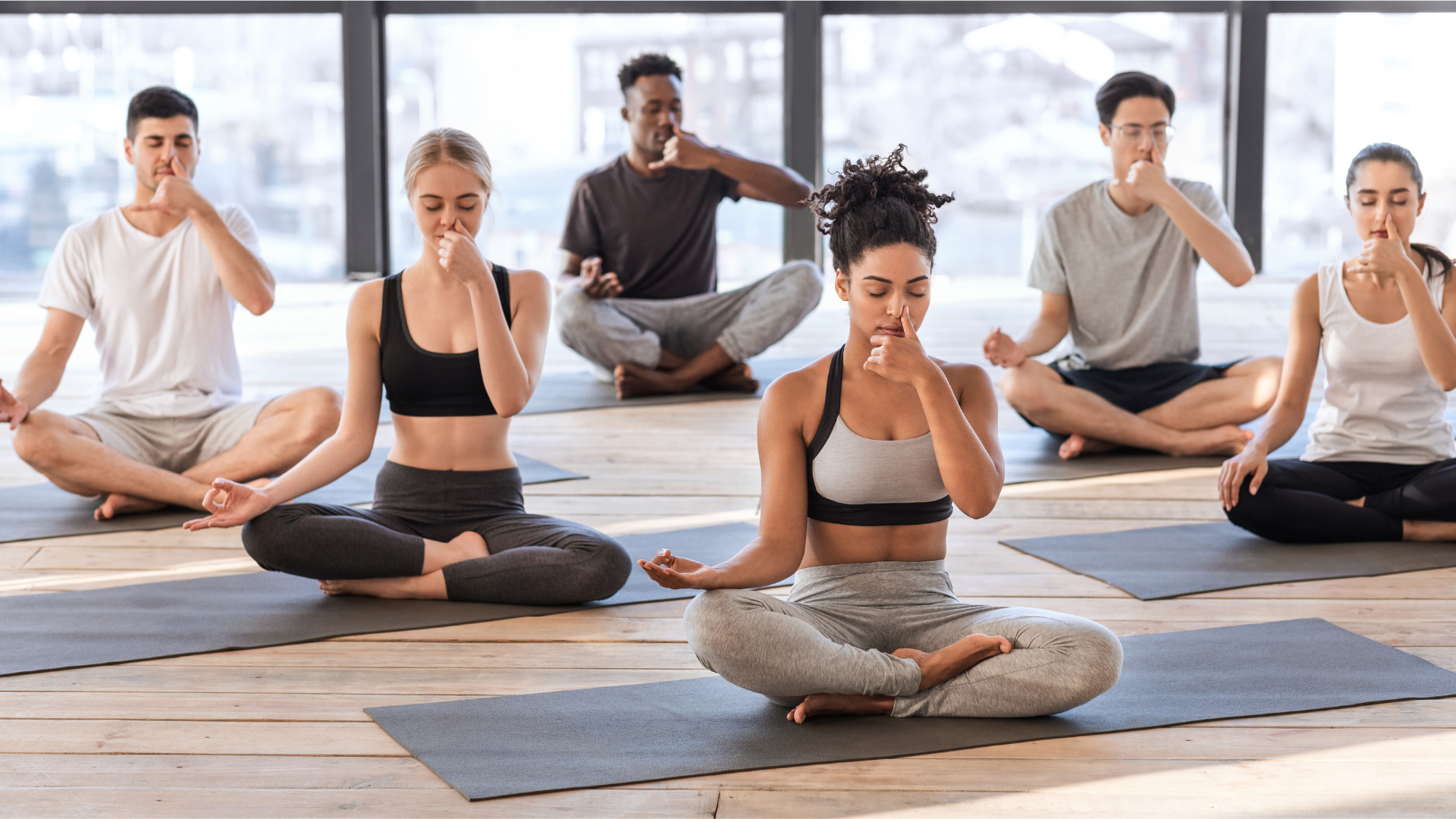
-
Begin in a comfortable seated position or even lying on your back.
-
Curl your index and middle finger of your right hand down so that they are touching the palm of your hand.
-
Place your ring finger over your left nostril and inhale slowly through your right nostril.
-
Once you complete your inhalation, close off your right nostril with your thumb.
-
Release your ring finger, opening up your left nostril, and slowly exhale.
-
Reverse the pattern, beginning with your right nostril closed, and inhale through the left nostril. Then close off the left nostril and exhale through the right nostril.
-
Repeat this pattern for as long as is comfortable. If you don’t usually practice Nadi Shodhana, it’s a good idea to start slow, maybe 3 to 5 minutes. You can gradually increase the duration of practice over time if you like.
Child’s Pose (Balasana): Child’s Pose is often used as a rest pose. However, it is also beneficial for grounding yourself during anxious times.
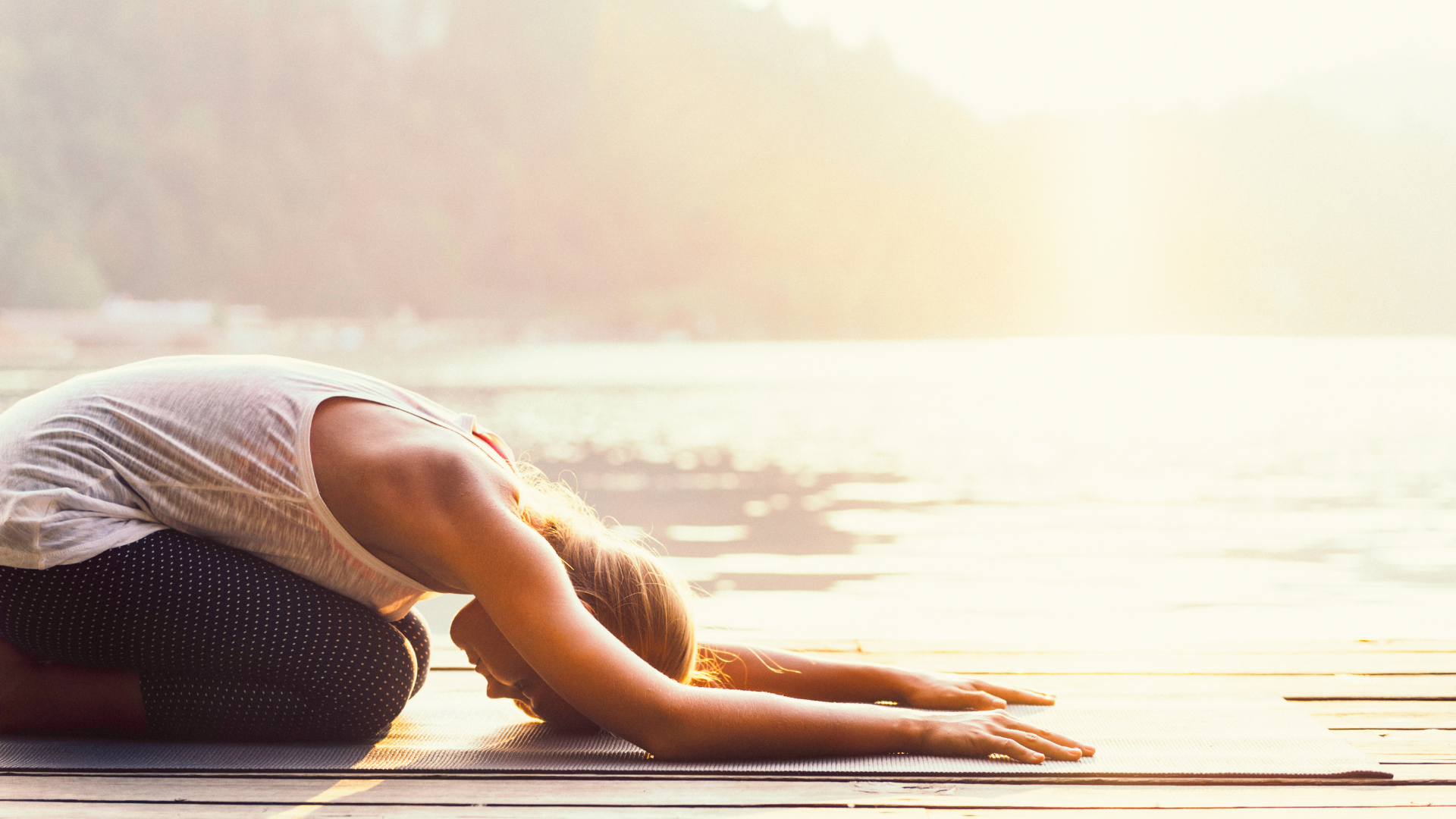
-
Begin on the center of your mat on your hands and knees. Place a folded blanket under your knees if you need additional padding.
-
Gently push your hips back toward your heels and separate your knees slightly wider than your hips.
-
With your big toes together, your legs will form a V shape.
-
As you exhale, lay your torso between your thighs, resting your forehead onto the mat, a block, a folded blanket, or a bolster.
Surya Namaskar A (Sun Salutations)
Practice a couple of rounds of Sun Salutations to warm up your body, release any excess negative energy, and to help focus your mind on your movement and breath. Take any modifications you feel you need for your practice.
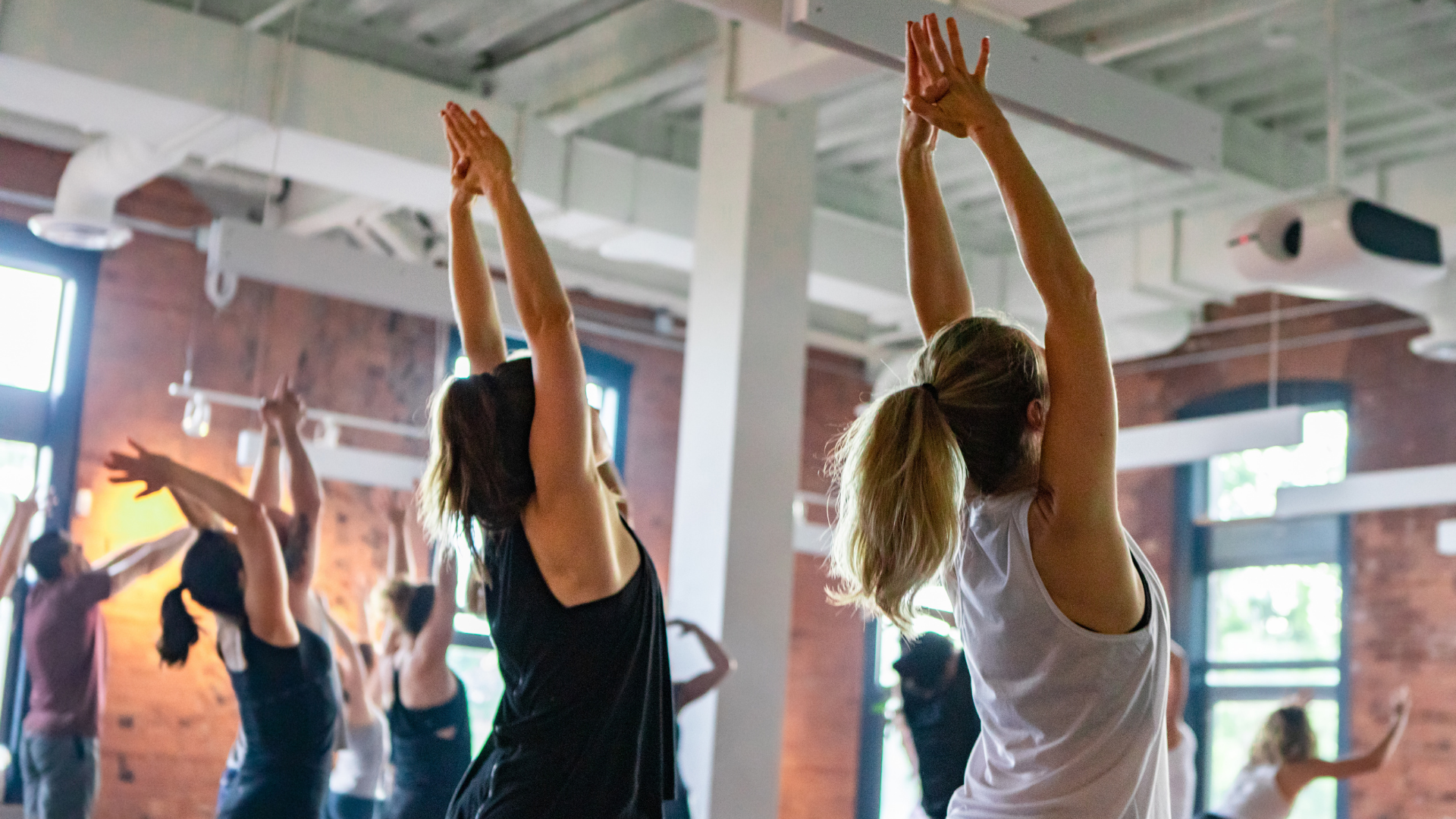
Tree Pose (Vrksasana): Although considered a basic pose, Tree Pose is an active pose that can help you feel tall, strong, and grounded, as if you can withstand any turmoil that you encounter.
-
Begin in Mountain Pose (Tadasana).
-
Spread the toes of your right foot wide, and push down evenly into each corner of your right foot (the inner and outer heel and inner and outer ball of your foot).
-
Bend your left knee and lift your left foot up to a height comfortable for you. Place the sole of your left foot against your right inner shin or right inner thigh. Avoid placing your left foot directly against your right knee to prevent injury.
-
If lifting your foot completely off the ground is difficult to balance, keep your toes on the mat and lift just your heel to the right inner ankle.
-
Place your hands in a position best for you to balance. Traditionally hands are placed in Prayer Position (Anjali Mudra).
-
Breathe deeply in the pose, staying aware of your right foot rooting down while the crown of your head reaches higher.
-
When you are ready to release Tree Pose, return to Mountain Pose and take a few breaths.
-
Repeat with the left foot down and lift your right foot up.
Camel Pose (Ustrasana): Camel Pose will build your confidence, ease lower back pain, and counteract the effects of sitting or slouching at your computer. Since Camel Pose is a backbend, it is also a way to symbolize opening your heart to a future of unknown possibilities.

-
Kneel on your mat with your thighs perpendicular to the floor and your knees under your hips. A folded blanket can be placed under your knees for additional padding.
-
Tuck your toes under so that your ankles are flexed and your toes are on the floor.
-
Place your hands onto your lower back, fingers pointed down toward your heels.
-
Bring your elbows toward each other, but not touching.
-
Lengthen your torso as if you are trying to create space between each vertebra.
-
Press your knees and shins into the floor and draw your lower belly back toward the spine. A strongly engaged core will help protect your lower back.
-
Slowly begin to arch your back, keeping the focus of the arch on your upper back. A good reminder is to push your heart forward rather than lean backward.
-
Keep your head in line with your spine and your gaze forward and slightly up.
-
If you feel any lower back discomfort, slowly return to a neutral position.
-
Breathe deeply and slowly in the pose for as long as is comfortable.
-
When you are ready, return to a neutral position.
-
Rest in Child’s Pose for a few breaths.
Happy Baby Pose (Ananda Balasana): Not only does Happy Baby Pose give a gentle stretch to your back, but it also can relieve neck strain and release tight hips.
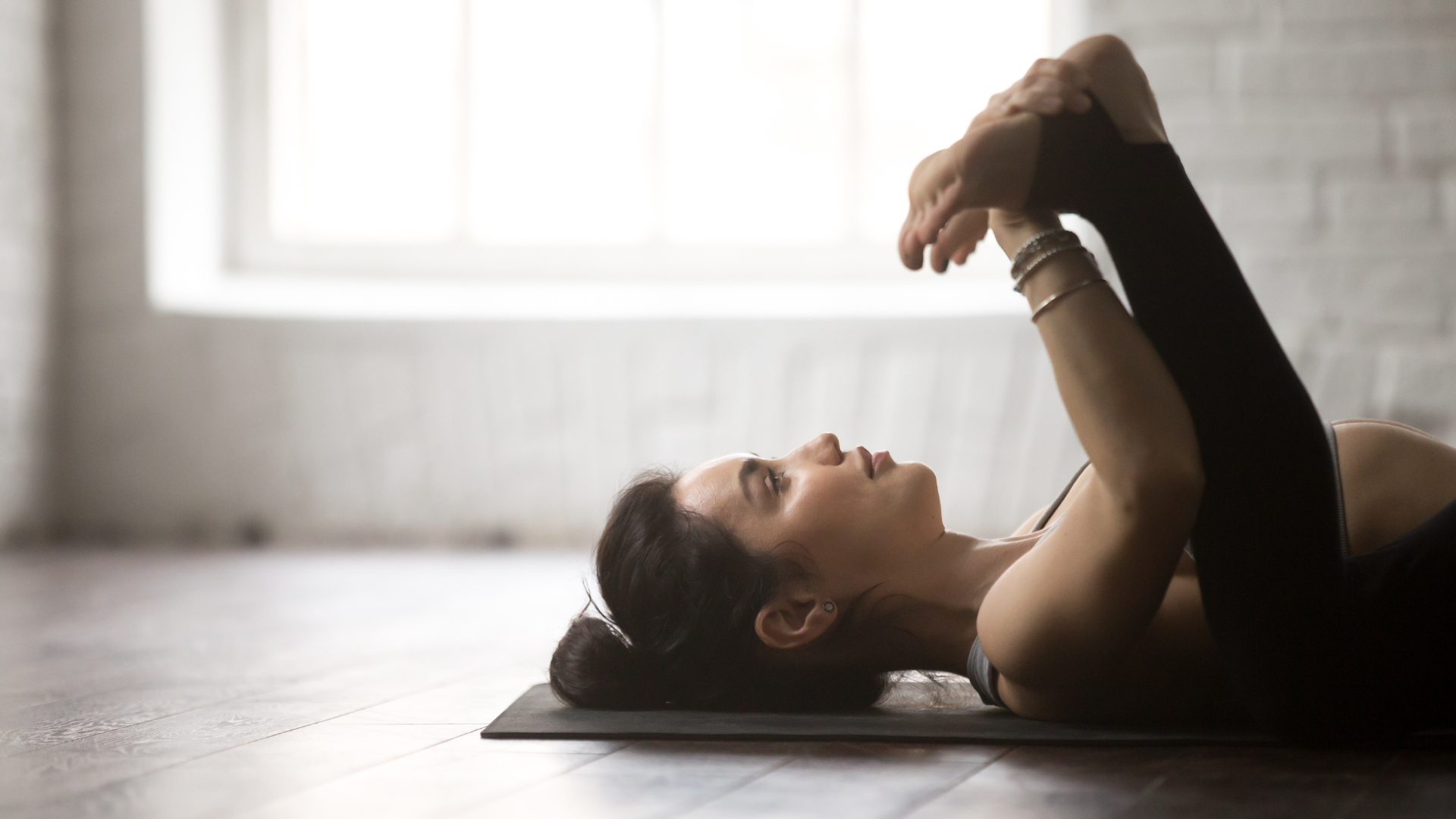
-
Lying on your back, bring your knees up toward your chest and slightly wider than your shoulders.
-
Reach down on the outside of your legs and place your hands on the outside of your feet. If that is too difficult to reach, you can also place your hands on the outside of your shins or behind your thighs.
-
Flex your feet, pulling your toes back toward your face and your heels toward the ceiling.
-
Work toward bringing your ankles over your knees and shins perpendicular to the floor.
-
A gentle side-to-side rock here can provide additional lower back relief.
Relaxation Pose (Savasana): There are many variations of final relaxation pose. This pose with additional support under the knees and a gentle eye covering can help us tune out the external world and remind ourselves of the peace always available within us.
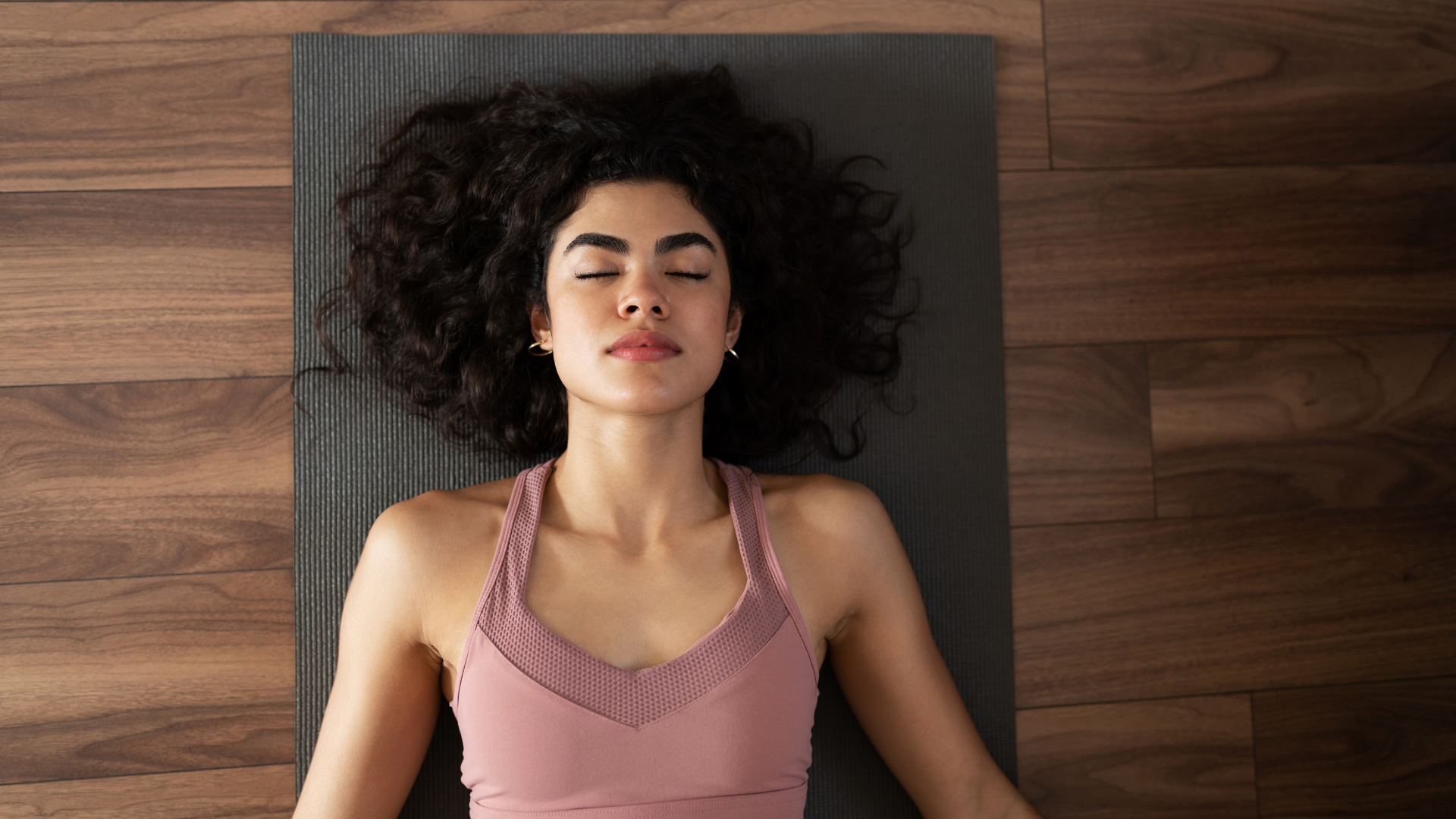
-
Sitting toward the front of your mat, place a bolster, rolled-up blanket, or pillows under your knees.
-
Gently lower yourself down so that you are lying on the mat.
-
Adjust the bolster as necessary to provide the most comfort for your back.
-
Place an eye pillow over your closed eyes.
-
Allow your feet to find a comfortable position of rest, and turn your palms upward with your arms at a natural distance away from your body.
-
Soften your jaw.
-
Allow your shoulders, torso, and lower body to become heavy.
-
Breathe naturally and without force.
-
Stay here as long as possible.
-
When you are ready to come out of Savasana, gently wiggle your toes and fingers. Roll onto your right side and stay here a few breaths.
-
Slowly bring yourself to a seated position and bring your hands together into Prayer Position.
-
Allow yourself one more moment of quiet, appreciation, remembering to touch into gratitude.
More helpful yoga practice tips and inspiration from Jennifer Williams-Fields-Restorative Yoga: A Sequence to Build and Maintain Resilience.
 Jennifer Williams-Fields E-RYT 200 is passionate about writing, yoga, traveling, public speaking, and being a fabulous single momma to six super kids. Doing it all at one time, however, is her great struggle. She has been teaching yoga since 2005 and writing since she first picked up a crayon. Although her life is a sort of organized chaos, she loves every minute of the craziness and is grateful for all she’s learned along the way. Her first book, "Creating A Joyful Life: The Lessons I Learned From Yoga and My Mom," is now available on Amazon. She has had her essays featured on Yahoo! and Dr. Oz The Good Life. She is a regular writer for Elephant Journal Magazine, Your Tango, and YogaUOnline. See more from Jennifer at jenniferwilliamsfields.com.
Jennifer Williams-Fields E-RYT 200 is passionate about writing, yoga, traveling, public speaking, and being a fabulous single momma to six super kids. Doing it all at one time, however, is her great struggle. She has been teaching yoga since 2005 and writing since she first picked up a crayon. Although her life is a sort of organized chaos, she loves every minute of the craziness and is grateful for all she’s learned along the way. Her first book, "Creating A Joyful Life: The Lessons I Learned From Yoga and My Mom," is now available on Amazon. She has had her essays featured on Yahoo! and Dr. Oz The Good Life. She is a regular writer for Elephant Journal Magazine, Your Tango, and YogaUOnline. See more from Jennifer at jenniferwilliamsfields.com.
Featured Courses








